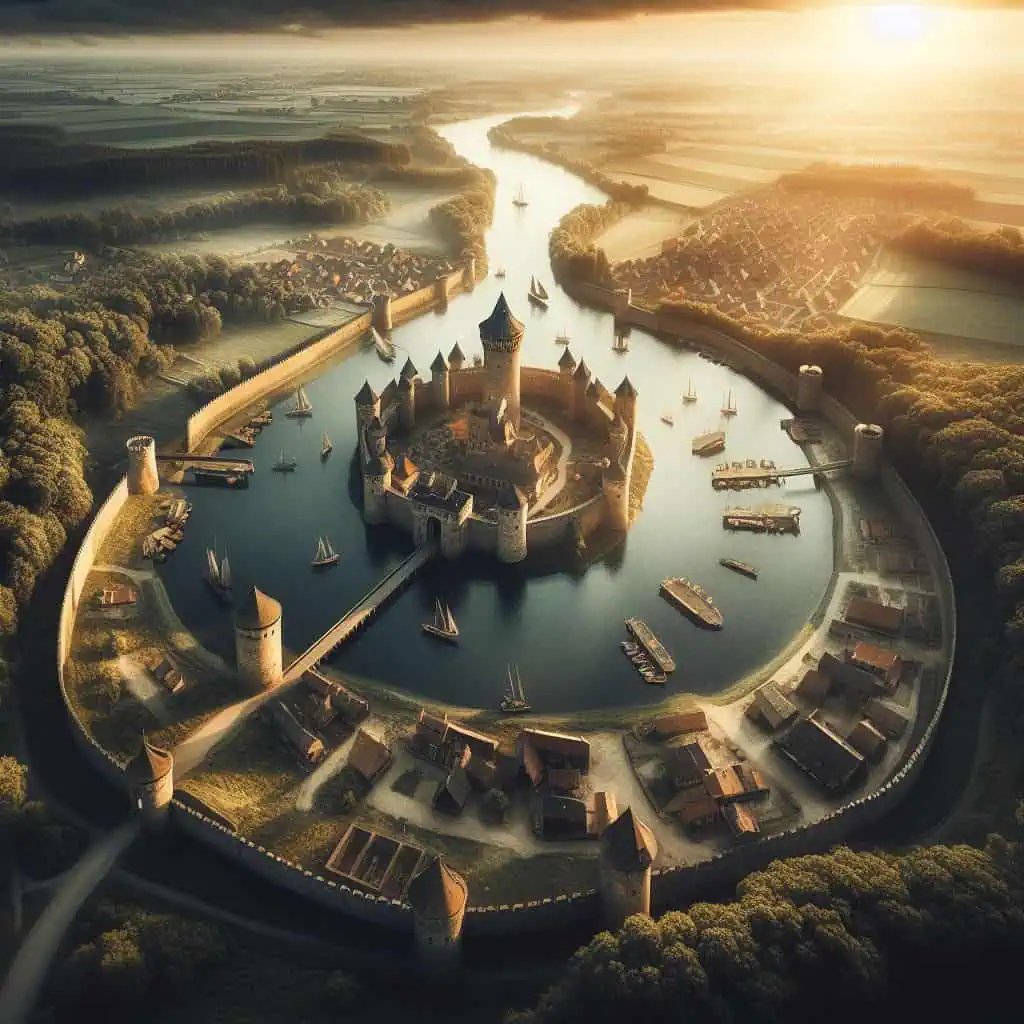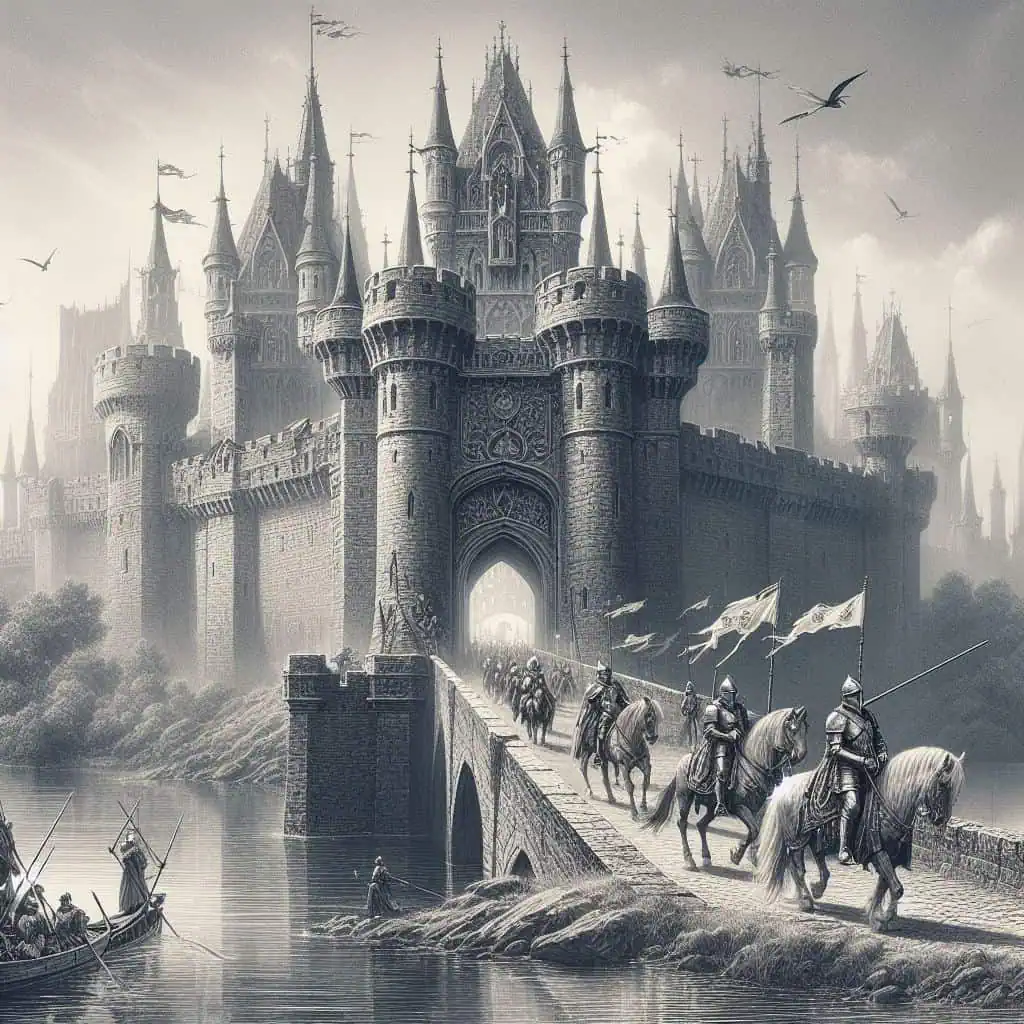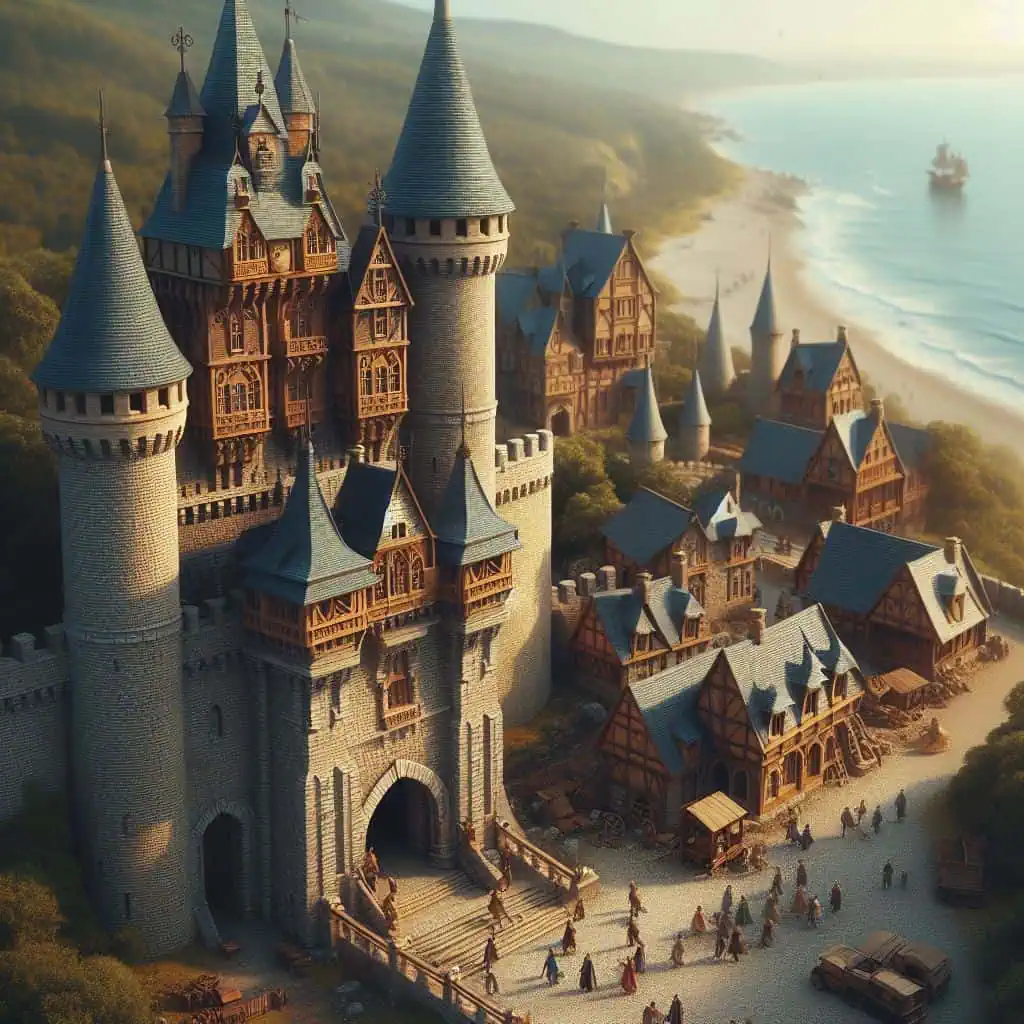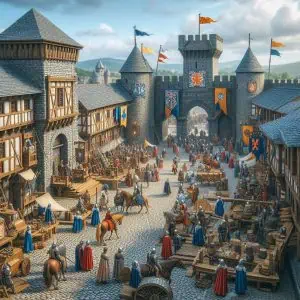In the world of medieval castle defense, few features were as vital or iconic as moats, drawbridges, and gatehouses. These critical structures worked together to form a powerful first line of defense, protecting castles from invaders and siege warfare. A moat, often filled with water, made direct assaults difficult, while a drawbridge provided controlled access to the stronghold. At the heart of the entrance stood the gatehouse—a heavily fortified structure equipped with portcullises, murder holes, and defensive towers. Together, these elements were essential to the strategic design of medieval castles, keeping enemies out and safeguarding the lives within.
Among their most iconic features are moats, drawbridges, and gatehouses, each playing a vital role in the defense and security of these imposing structures.
Understanding the function and significance of these elements provides insight into the military strategies and architectural ingenuity of the medieval period.
Moats
Moats were perhaps one of the most recognizable defensive features of medieval castles. These water-filled ditches surrounded the outer walls of the castle, serving both practical and strategic purposes. First and foremost, moats acted as physical barriers, hindering direct access to the castle walls and creating an additional layer of defense against would-be attackers.

Crossing a moat required considerable effort and time, often forcing assailants to slow their advance or seek alternative routes, thereby giving defenders valuable time to prepare and respond. Additionally, moats could be used to control access to the castle by regulating the movement of drawbridges, which were often the sole means of crossing.

Drawbridges
Drawbridges were movable bridges spanning the moat and connecting the outer bailey or courtyard to the main entrance of the castle, typically the gatehouse.

Constructed of wood or metal, drawbridges could be raised or lowered by chains or ropes operated from within the castle. In times of danger, raising the drawbridge effectively cut off access to the castle, creating a formidable barrier against attackers.
This mechanism allowed defenders to control entry and exit points, preventing unauthorized access and thwarting enemy incursions. Drawbridges also served as chokepoints, forcing attackers to funnel their forces and exposing them to concentrated defensive fire from the castle’s battlements.
Gatehouses
The gatehouse was the central component of a castle’s entrance and served as the primary point of access and egress. Far from being mere portals, gatehouses were heavily fortified structures designed to withstand prolonged sieges and repel invaders.

Typically featuring multiple layers of defense, gatehouses were equipped with sturdy gates reinforced with metal bars or spikes to withstand battering rams and other siege engines. Portcullises, vertically sliding grilles made of wood or iron, could be lowered to block the entrance in case of attack, further fortifying the gatehouse against intrusion.
Additionally, gatehouses often housed living quarters for the castle’s guards and servants, ensuring a constant presence and vigilance at the castle’s entrance.

Conclusion
Moats, drawbridges, and gatehouses were integral components of medieval castle defense, representing a fusion of military strategy, engineering prowess, and architectural innovation. Together, these features formed a formidable barrier against enemy forces, deterring potential attackers and providing a secure refuge for inhabitants during times of conflict.
While the era of medieval warfare has long passed, the legacy of these iconic defensive structures endures, reminding us of a bygone age of chivalry, conquest, and fortified might.
What was the purpose of a moat around a medieval castle?
A moat served as a physical barrier that surrounded a castle to prevent enemies from reaching the walls easily. Filled with water or dry, it made digging under or storming the walls far more difficult.
How did drawbridges help defend medieval castles?
Drawbridges connected the castle to the outside world by spanning the moat. They could be raised quickly in times of attack, cutting off access and stopping enemy forces from entering the castle.
What is a gatehouse in medieval castle design?
A gatehouse was a fortified entrance structure that protected the main entry point of a castle. It typically included portcullises, murder holes, and sometimes towers, making it extremely hard for invaders to breach.
Why were moats often filled with water?
Water-filled moats made it harder for enemies to use ladders, battering rams, or tunneling to approach the castle. They also discouraged siege towers and could trap or slow down attackers.
Could attackers cross a moat without a drawbridge?
Crossing a moat without a drawbridge was very dangerous. Attackers would have to swim, build makeshift bridges under fire, or try to drain the moat—all of which gave defenders a major advantage.
How did portcullises add to gatehouse defense?
A portcullis was a heavy, spiked gate that could be dropped quickly to block an entryway. Many castles had more than one portcullis, trapping enemies inside the gate passage for attack from above.
Did all medieval castles have moats and drawbridges?
Not all castles had moats or drawbridges, but they were common in important or vulnerable locations. Castles built on natural hills or cliffs relied more on terrain than water defenses.






